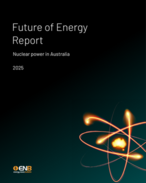The former energy minister yesterday said the latest government forecasts showed this country would miss its Kyoto target – of reducing greenhouse gas emissions to 1990 levels – by the equivalent of 36.2 million tonnes of carbon dioxide emissions for the initial five-year phase of the protocol.
Further action to reduce emissions could include improving the efficiency of New Zealand’s vehicle fleet, introducing biofuels, earning credits for emissions-reducing, “clean” energy projects in developing countries such as Pacific Island nations or China, and purchasing additional emissions units internationally, according to Hodgson.
He said there would be no changes to the NZ$15 per tonne carbon tax announced earlier last month – an assurance the NZ energy industry, particularly the oil and gas sector, will welcome as it has said excessive taxes could harm the country’s economy and deter domestic and foreign investment.
Government officials are due to report back on further emissions reduction measures by the end of October.
Significant reductions could be made by adopting already available practices, such as emissions reductions technologies and practices, Hodgson said.
The change from last year's forecast – which had predicted NZ would meet its target with 32.6 million tonnes of CO2 units to spare – had been driven by two factors, according to Hodgson.
The first reason was because New Zealand’s highly performing economy had increased overall emission levels, particularly in the transport sector, by 38 million tones of CO2. The second was that the method for assessing forest carbon sinks had changed, reducing the CO2 in the renewable “offsetting” carbon sink by 19.8 million tonnes.
About half of all NZ’s greenhouse gas emissions come from its agricultural sector.






















